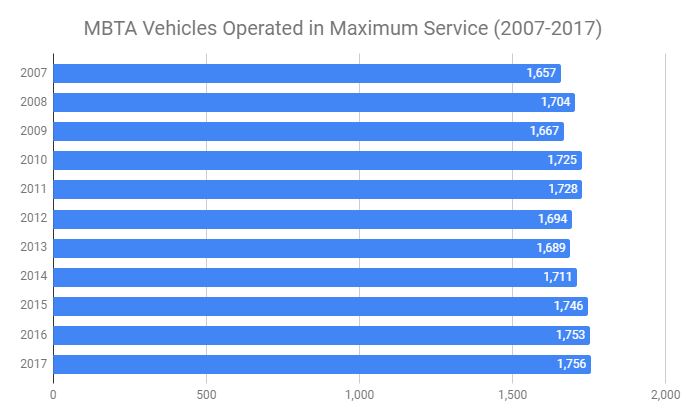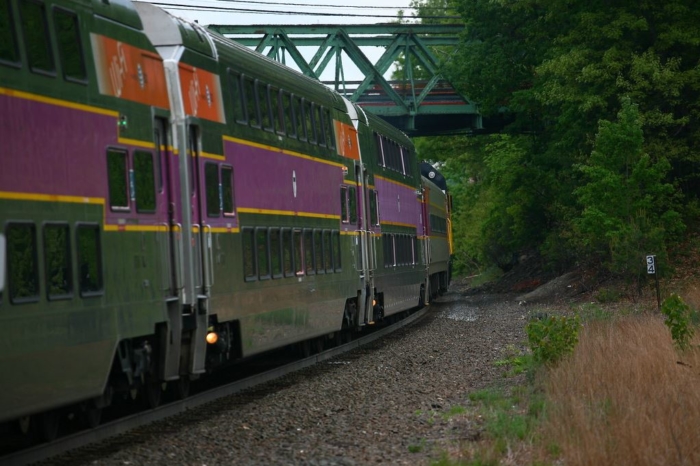MBTA Strikes Balance Nationally with Number of Vehicles Operated
The MBTA provides incredible benefits to the citizens of Massachusetts. Given that Metropolitan Boston provides 74 percent of the state’s jobs and generates 84 percent of its gross domestic product, the MBTA has the enormous responsibility of transporting about 500,000 commuters daily to sustain economic growth in the Commonwealth.
While the T has the obvious benefit of helping commuters get to work, including the 27 percent of MBTA light and heavy rail riders who are from zero-car households, the T actually generates $11.4 billion in annual benefits ($3.6 billion in travel cost savings, $7.1 billion in travel time savings, $640 million in avoided crash costs, and $30 million in avoided pollution costs). Given the importance of public transportation in the state, the MBTA should constantly compare itself to peer transportation networks across the country to make sure it has the proper number of vehicles to ensure it can support Massachusetts’ growing population.
According to Pioneer Institute’s MBTAAnalysis.com, the MBTA was the fourth largest public transportation network in the country in unlinked passenger trips between 2007 and 2017. Given its size, the MBTA must make sure it has an appropriate number of vehicles to support its ridership volume. Interestingly, as it did in terms of unlinked passenger trips, the MBTA ranked fourth in most vehicles operated in maximum service in relation to peer U.S. transportation networks between 2007 and 2017. It is clear that the two metrics are intertwined, as over the 11 years, both the vehicles operated in maximum service and unlinked passenger trips increased by between four and six percent.

While it may sound obvious that growth in unlinked passengers coincides with growth in the number of vehicles operated in maximum service, it is a delicate balance that greatly affects commuters in the state. Further, with plans to increase the Orange line and Red line fleets by a combined 66 vehicles by 2023, the MBTA is preparing for significant ridership growth. While performance metrics are crucial in evaluating the MBTA, the first step in evaluation should be to make sure enough vehicles are employed to accommodate both economic and ridership growth.
Harris Foulkes is a Roger Perry Transparency Intern at Pioneer Institute and a rising sophomore at Amherst College studying Economics.



